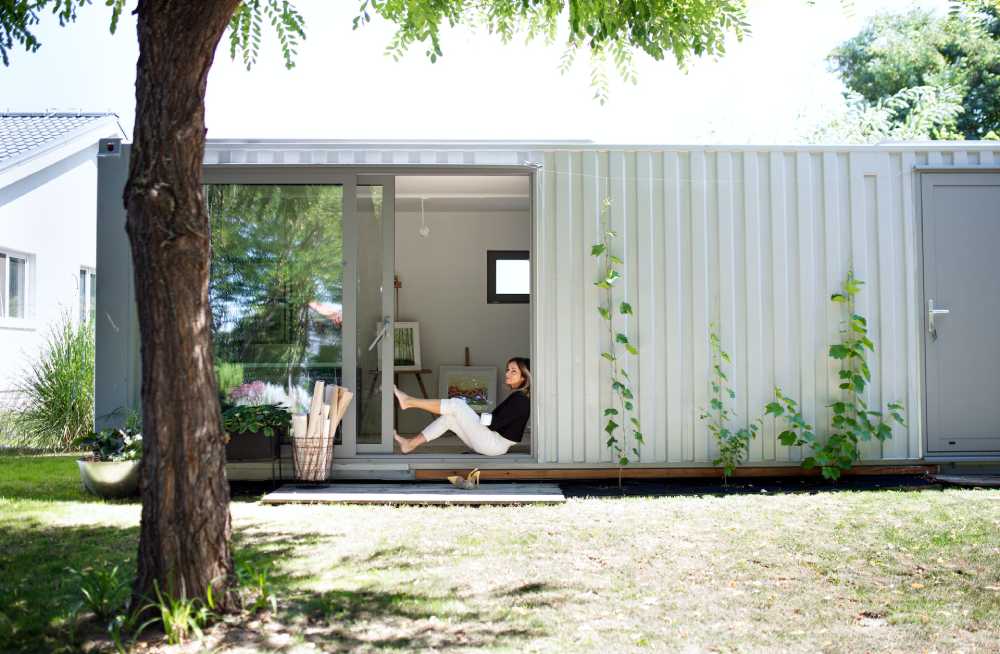In addition to the portability of shipping containers, their repurposing into creative business spaces has also been a sign of sustainability. From tiny homes to pop-up restaurants, the use of shipping containers has grown exponentially over the years.
It required only two crews of dockworkers and could travel at 30 tons per hour.
Adaptability
The versatility of shipping containers is a crucial advantage for clients with a changing business plan or need to scale up quickly. Unlike most traditional construction, a shipping container building can easily be expanded in size and relocated from one location to another without compromising the structure or its finishes.
Modified shipping containers also offer a more cost-effective alternative to traditional construction methods. Building with custom-made shipping containers is often 20% to 50% less expensive than conventional materials, making it a good option for budget-conscious projects.
Another benefit of shipping container buildings is their sustainability. Using a used shipping container as a building material means giving that cargo box another life and helping it avoid landfills. By avoiding the need for bricks and concrete, a container building can help reduce the environmental impact of any project.
Adaptability and sustainability also work together when it comes to shipping container building. The walls of a shipping container can fold down, creating an open feel perfect for events and experiential marketing projects. Additionally, when a shipping container home is built at a factory, the manufacturer can redistribute unused materials to other projects, dramatically reducing waste compared to onsite construction.
Cheap, sturdy, and easily transportable, these custom-built shipping containers are perfect for various non-cargo uses, from storage units to office spaces.
The benefits of containerization are clear: they significantly reduce transport costs by reducing the time it takes for cargo to be moved from truck to ship to train. It makes international trade more accessible for both small and large manufacturers alike. As a result, it’s no wonder that 90% of every consumer product you purchase has been transported in a container.
Despite being originally designed for shipping cargo, the modular design of these containers means they can be easily combined to form larger structures. This adaptability is due to their standardized dimensions and various interlocking mechanisms. It allows them to be stacked up to 12 units high, facilitating even the tallest buildings.
The earliest recorded example of an alternate use for a shipping container dates back to the 1960s when they were used as portable showrooms for trade fairs.
Sustainability
When it comes to eco-friendly construction, sustainability plays a significant role. Repurposed shipping containers are often used to build offices and homes, reducing the need for building materials and the waste created during construction. They can also be utilized in disaster-affected areas to provide temporary housing or shelter.
Furthermore, shipping container-based structures offer an attractive alternative to traditional construction in terms of durability and longevity. These containers were built to withstand rigorous sea voyages and have been around for decades, making them the ideal structure for long-term use.
Shipping containers can be repurposed to construct ADUs or Accessory Dwelling Units. These compact living spaces can be built on the same lot as a residential home. The demand for this option has been growing, particularly among individuals who want to adopt a more eco-friendly lifestyle.
Moreover, shipping containers can be incorporated into modular construction processes, which allows builders to build homes offsite and minimize the impact on site-specific environmental factors.
In addition, converting containers into buildings is an environmentally friendly choice because the process eliminates the need for new materials and drastically reduces energy consumption. For instance, a shipping container home with solar panels can save homeowners electricity costs because the flat roofs are ideal for generating renewable energy.
Additionally, manufacturers that modify shipping containers offsite can reuse the unused materials for future projects. It significantly reduces waste compared to traditional construction methods, where many materials are discarded at the end of a project.
Flexibility
Back in 1956, entrepreneurs introduced the intermodal shipping container. It revolutionized global trade, allowing cargo to be seamlessly transferred between road, rail, and sea.
It’s no secret that containers are incredibly versatile, but some designers need to understand their nature. The key is flexibility, both structurally and logistically.
Because the United States imports much more than it exports, many manufactured goods come through seaports like Los Angeles. This results in a significant surplus of shipping containers that are left empty on arrival.
As a result, these containers are sought for alternative uses that use their sturdiness and affordability. The popularity of shipping container architecture has exploded over the past decade, with architects turning them into everything from office spaces to pop-ups in London’s shore district.
Innovation
Shipping containers have revolutionized the logistics industry, enabling cargo to be transported from one mode of transport to another without unloading. They’ve also helped to facilitate economic growth in countries with solid port infrastructures, allowing goods to be shipped cheaply and efficiently to places where they would otherwise have had to be made from scratch.
It is widely believed that shipping container development was the most critical factor in globalization over the last sixty years. At its peak, containers accounted for around 90% of the world’s cargo.
They are sturdy, economical, and highly portable, making them ideal building materials.



